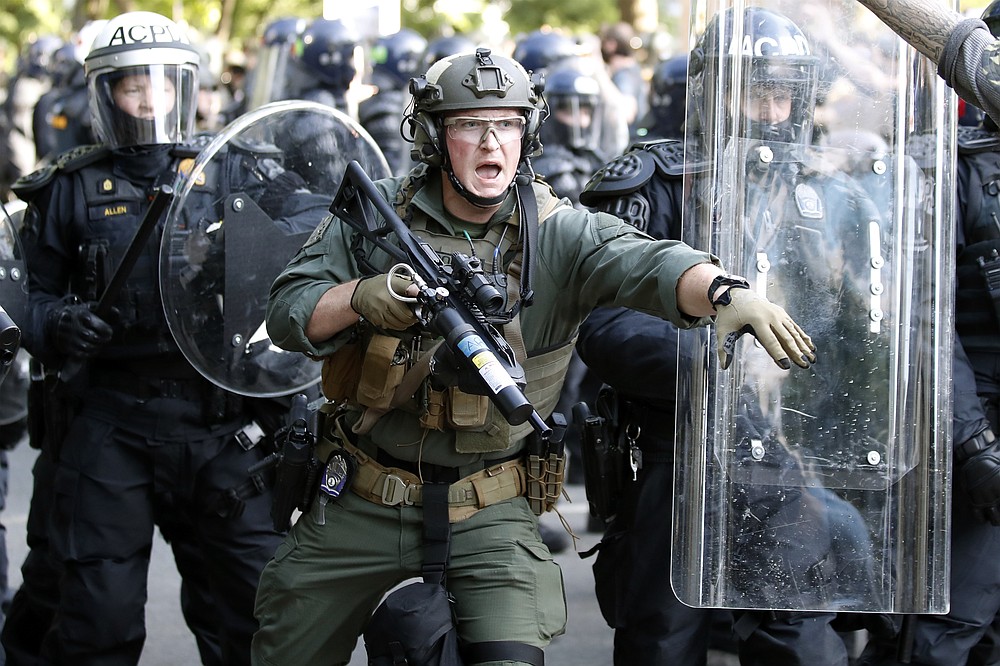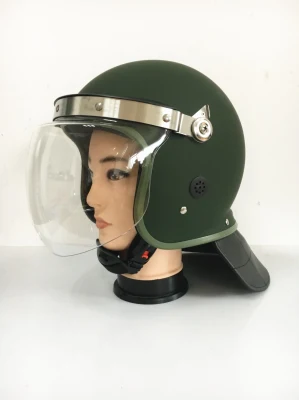Riots and civil unrest can pose a significant threat to public safety, requiring law enforcement agencies to use specialized equipment to maintain order and protect officials and civilians. Riot gear plays a vital role in such situations, providing better protection and control to law enforcement officers.
Learn about riot gear
Riot gear refers to a range of protective gear designed specifically for riot situations. It is designed to protect law enforcement personnel from a variety of hazards, including projectiles, blunt impact, chemical agents and physical assault. Riot gear not only provides physical protection but also acts as a clear deterrent to would-be troublemakers.
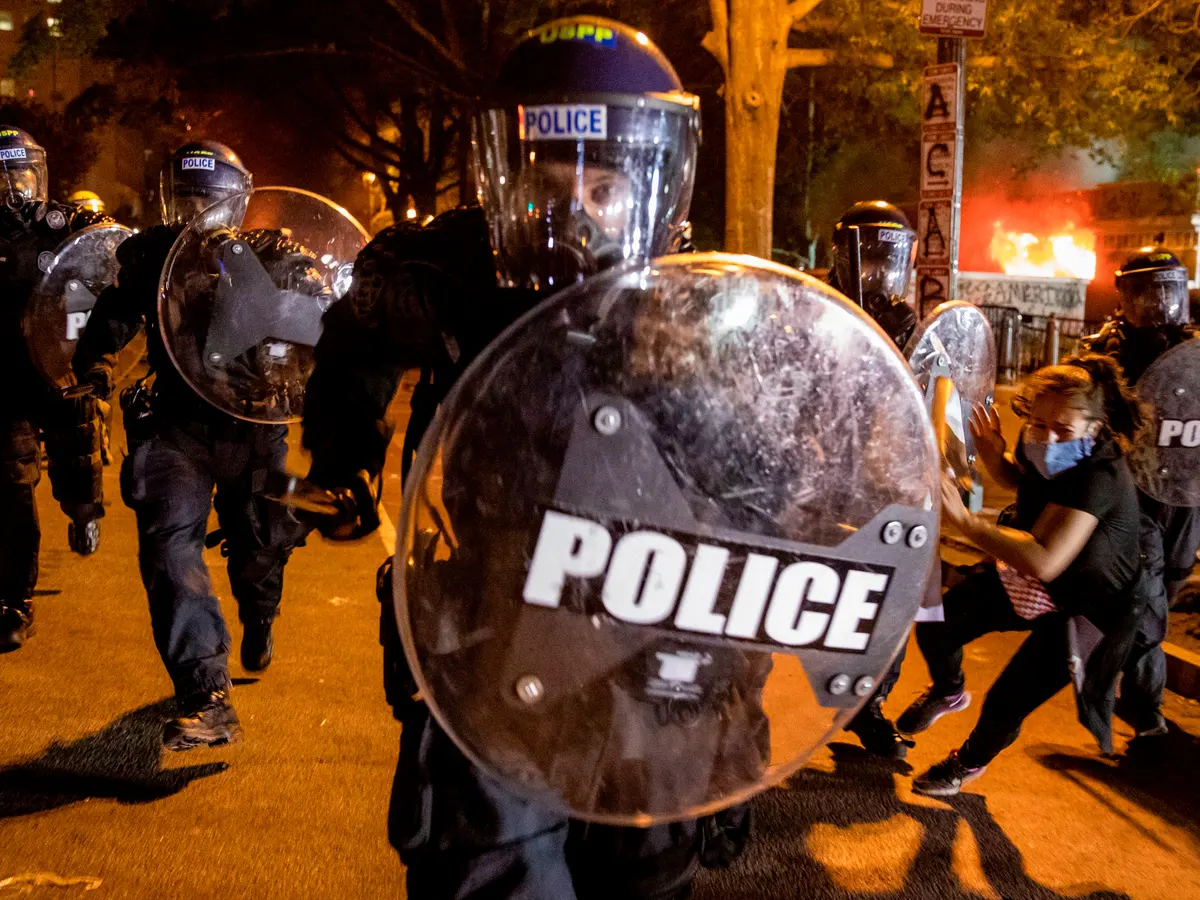
Components of riot gear
Riot helmet
Riot helmets are an essential part of riot gear designed to protect the head and face from projectiles, blows and chemical irritants. It usually has a reinforced shell made of a durable material like polycarbonate, along with an adjustable suspension system and a visor or visor for extra protection.
Anti riot body armorRiot armor is designed to protect the torso, shoulders and vitals from blunt force impact and the threat of stabbing or piercing. It usually consists of a combination of rigid panels made of materials such as polycarbonate or composite ceramics and flexible panels made of ballistic fabrics such as Kevlar or Dyneema. Armor may include adjustable straps and fasteners to ensure a secure fit.
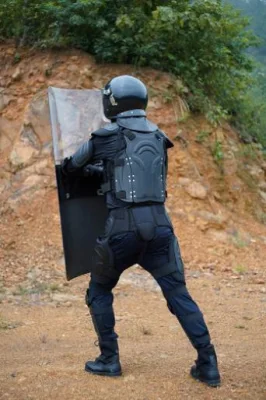
Riot Shield
Riot shields are large, clear, impact-resistant shields used by law enforcement to protect against projectiles, thrown objects, and physical attacks. Made of materials such as polycarbonate or high-strength plastic, riot shields provide a barrier between officers and potential threats while allowing visibility and mobility.
protective suit
Law enforcement officers may wear specialized protective clothing, such as padded vests or arm guards, to provide additional protection from impact and abrasion. These garments are usually made of durable, tear-resistant fabric and include padding in key areas.
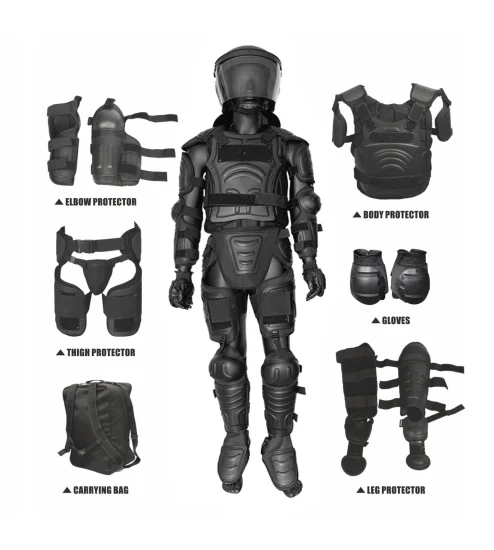 (Click to view protective suit)
(Click to view protective suit)
Gas masks and respirators
Law enforcement officers may use gas masks or respirators to protect against chemical agents or tear gas used during riots. These devices create an airtight barrier between the wearer’s face and the surrounding air, filtering out harmful substances and ensuring officers can breathe safely.
Working Mechanism
Riot gear is designed to mitigate the risks associated with riot situations and increase the safety and effectiveness of law enforcement operations. This gear works in the following way:
Protection against shock
The primary function of riot gear is to absorb and disperse impact, minimizing the risk of injury from projectiles, thrown objects or personal attacks. Helmets, body armor and protective clothing are all made from materials with excellent impact resistance, which disperse impact energy and reduce the potential for serious injury.
Permeability
Materials of construction for riot gear, such as polycarbonate or composite ceramic, resist stab or puncture threats. This helps protect law enforcement officers from sharp objects such as knives or improvised weapons that may be used during riots.
Chemical and irritation protection
A gas mask or respirator in riot gear protects against chemical agents, tear gas or other airborne irritants that may be used during a riot. These devices filter out harmful substances, ensuring officers can breathe safely and remain productive.
Visual Deterrence
The visibility and distinctive look of riot gear has a deterrent effect, signaling the presence of law enforcement and deterring would-be troublemakers. The imposing nature of the gear can deter individuals from engaging in aggressive or violent behavior.
Riot gear is an essential tool for maintaining public order and protecting law enforcement during riots and civil unrest. By combining protective components, mobility features and tactical considerations, riot gear provides enhanced safety and control. Continuous advancements in design, materials and training ensure riot gear remains effective and adaptable to meet changing challenges. By equipping law enforcement personnel with well-designed and properly maintained riot gear, authorities can improve their ability to manage and mitigate the risks associated with civil unrest, thereby protecting police officers and the communities they serve.


